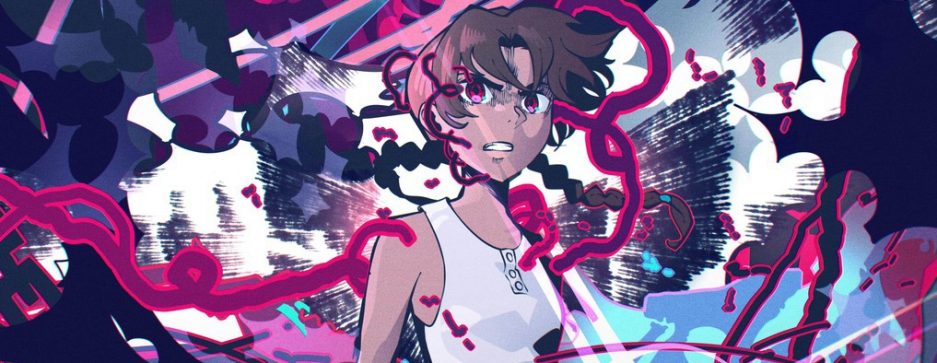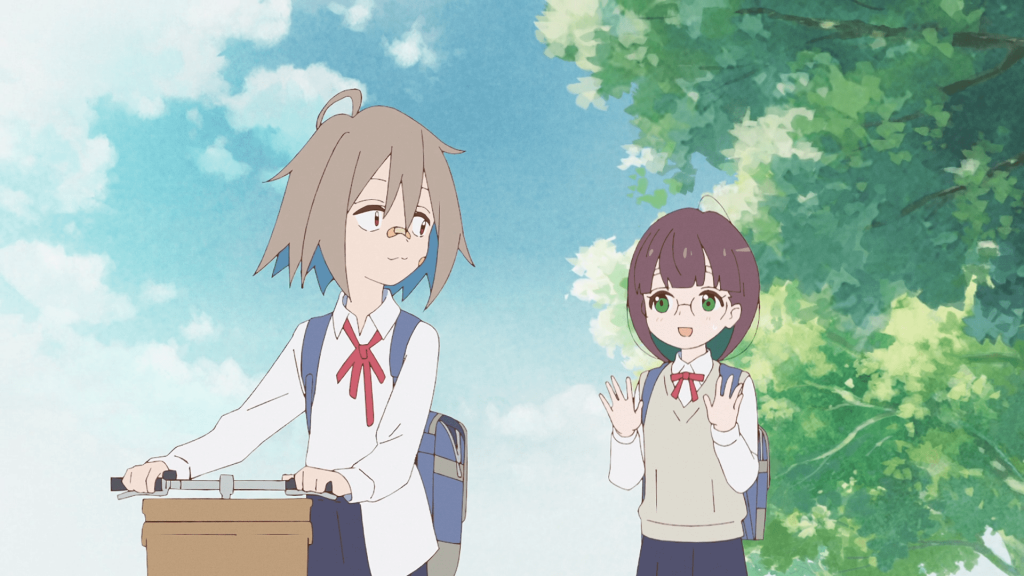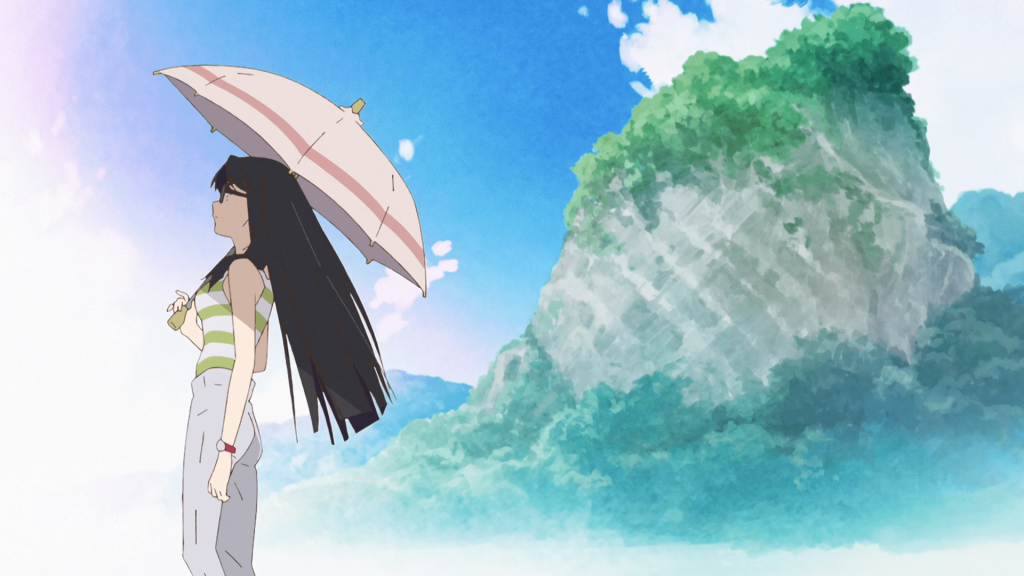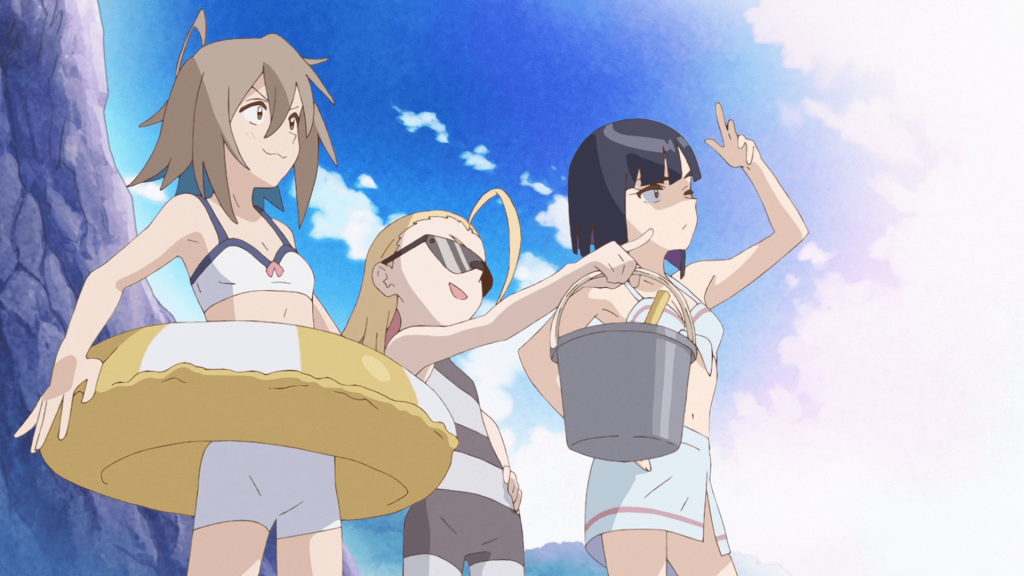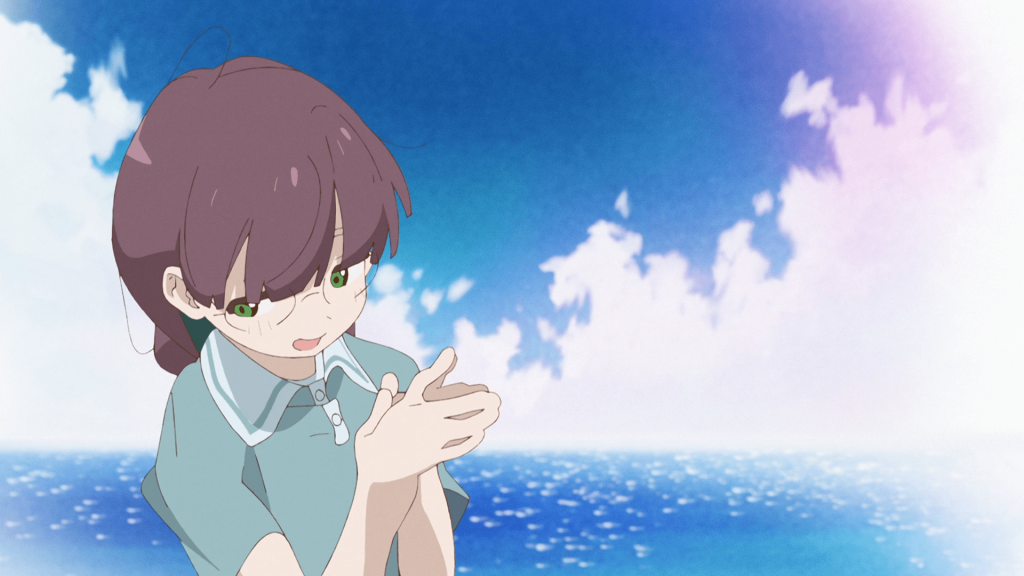“In terms of the number of people who really try [to make interesting animation], it’s like finding gold in the sand. There really are only a few. However, it’s not zero. There are still people who try to protect the industry, people who try to make something they believe in. I can feel the creators’ passion and will in those anime, and not, “Will this sell?”, or if it was made for financial success, but people who do it because they want to do it. There are few of those out there.” [1]
– Masao Maruyama
Masao Maruyama is a man with no shortage of wisdom to spare. The philosophy above is remarkably consistent with the way he ran Studio Madhouse during his tenure. This would include his bet on the imagination of animation phenom Mitsuo Iso, which in turn lead to his first original title: Dennou Coil. For as much of an inventive masterpiece as Dennou Coil is, it tragically failed to penetrate the mainstream despite a prime slot on the nation-wide NHK network. In the time since, Iso has had difficulty getting his ambitious ideas off the ground. Perhaps these struggles lead to a reassessment of his approach, which he touches on in a 2020 roundtable talk with none other than Shingo Yamashita. While divulging on the topic of creator-driven works such as Kemono Friends S1, Iso claims to have seen the importance in making art that is enjoyable at a superficial level for the audience, rather than being consumed by a need to innovate and push artistic boundaries, though the latter is still important in his eyes [2]. In any event, we can still only guess as to why for Do It Yourself!!, he elected to conceal himself as its original creator under the pseudonym IMAGO.
As a name, IMAGO originated with Mitsuo Iso’s invention of a genga-preview software in 2004 [3, 4]. It may have existed as early as Neon Genesis Evangelion’s production in 1995 though, wherein he similarly designed animation recording software in C programming language, though it is unknown if he dubbed it accordingly [3, 5]. In any event, IMAGO would later become a core concept of the world of Dennou Coil [6], and so that this name is borrowed from his own magnum opus means he wasn’t seriously trying to hide his involvement with Do It Yourself!!. It does, however, obfuscate his presence just enough to skirt the public eye, and simultaneously make it difficult to speak towards exactly how much he contributed to the show. This is further compounded by many aspects of the initial pitch being liable to change a great deal by the time they are refined into a finished product. Therefore, the minor calling cards with resemblance to his past works such as the off-kilter humor, and near-future society are difficult to assign exclusively to him. Though if we are to find his signature anywhere (outside of a few eye-catches), it’s written upon the face of the thesis: one which serves as a gentle reminder of the comfort in hand-crafted art in the midst of a rapidly advancing technological world, and moreover, finding the inherent charm in the materials at your disposal.
Mitsuo Iso has made his passion for technology very clear over the years. To an undeniable degree it has permeated his art, embedded itself in his approach to storytelling, and even consumed his twitter feed. Therefore, it’s interesting to see such a balanced take – one that still embraces the role technology plays in our daily lives, but simultaneously reminds us that some activities are best done the hands-on way. It coincidentally arrives at a fitting time, as A.I.-generated art has recently entered mainstream circulation, introducing a host of ethical dilemmas over authorship and the eternally relevant questions surrounding what it truly means to be an artist in the process [7]. Moreover, as a hand-drawn, 2D-animated work that also relies on computers to reach a finished state, there is an amusing thematic counterpoint pervasive throughout the show, both on the whole, but even at an individual scene level. Ren Onodera’s work on the fourth episode is a great example, as he is known to use Houdini computer software to first model the characters as a base, and then hand-draw the animation over it [8]. The combination of the two mediums results in a finished product that possesses a uniquely uncanny energy, eliciting a feeling from the audience that would be otherwise impossible to achieve through analog techniques alone.
The commentary on the role of technology in an advancing world is an ultimately subtle point of the show, and only by having an understanding of its original creator (who isn’t even properly credited) does the bigger picture become more clear. Some credit on this front must also be shared with script writer Kazuyuki Fudeyasu, as aside from implementing the core ideas, they similarly have a history penning anime loaded with technology of all sorts of forms. Nevertheless, most viewers will probably better remember Do it Yourself!! for its wholesome character interactions instead, which, depending on who you ask, is just as valid of a premise. Its attributes as a healing anime can mainly be traced back to the work of the aforementioned Fudeyasu and series director Kazuhiro Yoneda. Together they fleshed out the world and characters to emphasize the light hearted fun found throughout the many creative tasks the cast undertakes. A major asset working in favor of the show’s appeal is how relatable D.I.Y. is as a concept. Even if it doesn’t involve working with wood or raw materials (for the less proprioceptive of us), most will at least be able to relate to the satisfaction of channeling yourself into a craft. This premise in tandem with the inherently comfy vibes can only get the show so far though. In order to truly ascend to the top of its genre, the other aspects of the production also need to carry their weight and for this, it is worth turning towards the studio itself.
Pine Jam is a young studio that has been historically plagued by a lot of growing pains. Their roots are firmly planted in the character-driven/slice of life genres, so over time, one would hope that that would attract artists of a similar skillset. While this was the case primarily thanks to sharing the services of talented individuals from Studio 8-bit, young artists also need time to find their footing in this turbulent industry. Landing the ever prolific Takahiro Kishida for shows such as Gleipnir (2020), and Kageki Shoujo (2021) represented a major turning point, as it accelerated the growth of the already burgeoning group at the studio, most of which grew up as fans of the sakuga icon to begin with. Noriyuki Imaioka chiefly among them, his presence at the studio is a significant factor in the fostering of their “sakuga culture”, and it shows in their recent string of anime between Gleipnir, Kageki Shoujo and most recently Do It Yourself!. The linearly increasing solidity of these three shows suggest that they’ve made considerable improvements in their approach, and continue to exhibit a desire to maintain a respectable level of quality. Though like most studios, especially on the management side, there is admittedly still a long ways to go. As the series director of all three aforementioned anime, Kazuhiro Yoneda deserves a lot of credit for their recent success. Success which is all the more impressive especially considering that, as a production, Do It Yourself!! was significantly more demanding than most of the projects the studio has seen before. This is in part due to the nature of original anime in general, but further intensified by the high bar the staff set for themselves. It is clear a lot of time was spent gathering specific D.I.Y. knowledge and references, and it shows in how authentic the characters’ deliberate mannerisms are when it comes to their craft. Of course, there are many people besides Yoneda involved in ensuring the show could be put in the best possible position to succeed, but for him in particular, it would seem the project was personal.
Another step forward for Pine Jam would come in the form of their in-house background art studio. Established a couple years after their founding, it’s currently being lead by Yuka Okamoto. While she has painted anime backgrounds for a few decades now, its only since joining Pine Jam that she became a regular art director. Thus far, the three series she’s presided over alongside color designer Yasuji Sakagami (Just Because!, Glepnir, and Do It Yourself!) have seen exponential increases in attractively realized worlds – though that trend will surely be a challenge to continue considering the extremely high bar set by this most recent venture.
A significant reason for the massive leap found in Do It Yourself!!’s art direction is the inclusion of a key outlier in character designer Yusuke “Fugo” Matsuo. There will be plenty to say about Fugo’s contributions to the series from an animation perspective later, however as far as the art direction is concerned, he transcended the expectations inherent to his role. This included drawing many imageboards that were characterful to the point of most of them being 1-for-1 re-purposed in the show, even prompting the script writing to be flexible enough to integrate the ideas he drew. At the same time, Fugo’s image boards laid the foundation for much of the approach the art department would take in developing the setting. It is not unfair to say without his intimate involvement on this front, the show may have instead adopted an entirely different style.
On a surface level, of particular note is the static grain applied to the environments which, for a show about crafting art from raw materials, gives a fitting, unprocessed feeling throughout. An equal amount of attention is paid to the design between dawn, day, dusk and night, all of which the show regularly cycles through to keep scene variety high and refreshing. The heart and soul of Do It Yourself!!’s art direction, however, are the predominantly light colors paired with the edges of the screen fading into white, which evoke feelings of a children’s picture book. This would bode well for our absent-minded protagonist Yua, and her frequent daydreaming episodes, as there can be no mistaking whenever she enters her own world. In the first instance, the shift is accompanied by an increase in saturation that leaves you envious of the vivid imagination possessed by this whimsical child. In her mind’s eye, shadows cease to exist. Details are drawn for appeal rather than accuracy and a watercolor texture pervades every cel. For each successive time we find Yua engrossed within her own realm of fantasy, the dream logic and comedic timing remain consistent, but the visual features are liable to assume new forms of child-like fancy. This leaves the audience in anticipation of what ridiculous scenario she’ll imagine next, and ultimately serves as a strong avenue for creative outlet on the series.
From an animation perspective, Do It Yourself!! has a number of standout episodes, though it should be noted that most of it is frontloaded in the first half. That’s not to say the show collapses, but rather, a conservative approach in the later stages allowed it to come to a rolling stop instead of a crash and burn finish like we’ve seen from Pine Jam productions in the past. In any event, many of Do It Yourself!!’s peaks are helmed by up-and-coming, young talent – a rare positive sign for the future of the industry. Perhaps more interestingly though is the way the veteran talent takes up the supporting role around them. While legends like Norio Matsumoto and Takahiro Kishida are content to contribute without credit from the backlines, the vanguard of the veteran presence on Do It Yourself! is no doubt its character designer and chief animation director, Yusuke “Fugo” Matsuo.
As a Kyoto Animation-trained artist, and one who established himself among their strongest animators at that, Fugo’s fundamental drawing ability goes without saying. Therefore, for the sake of discussing his body of work, the much more interesting talking point is instead the unorthodox approach he takes when it comes to applying that skill. Which is to say, there is no patented “Fugo” art style. It exists rather in a constantly evolving state. Regardless of whether it’s key animation, supervision or character design work, his output is remarkably volatile, yet always imbued with overflowing charisma and cuteness. In an industry where most top artists settle on a style and replicate it ad infinitum, Fugo is an anomaly. To call his approach “carefree” would be a disservice to his dedication to his craft, but nonetheless his output does have a certain lax energy. This suggests that he is comfortable with his skill as an artist to the point where he will make any idea that comes to him work, instead of trying to force square pegs through round holes. Further bolstering the resume of Yusuke Matsuo is the frequency with which he will elect to do hands-on work. For Yama no Susume, that often entailed solo key animated episodes, whereas for Do It Yourself!, his supervision could be felt across the entire first half, culminating in the sixth episode in particular, which commanded his intimate involvement and naturally launched it to the highest heights.
As far as beach episodes go, Do It Youself!! #06 is in a league of its own. For starters, the lack of overtly lecherous perspectives already distances it from a majority of its contemporaries. It also stands out within its own show as being the healing-est of any scenario it has to offer. For as overwhelmingly positive the D.I.Y. club’s fun in the sun is, the episode also happened to be tasked with a very challenging confrontation of Purin’s feelings. Thus far she had purposely isolated herself, harboring jealously over the chummy circle her childhood friend managed to form. Yua extends her hand once again, and if there was a time for Purin to move beyond her stubborn disposition toward the club it would be now, but before she is given the opportunity to, an interruption shakes her momentum, ultimately leading to her declining the invitation. In the moment of contemplative silence which follows, she watches from the sidelines as the sun sets on their excursion, and comes to a self-realization that stands as an immensely important turning point in her character arc.
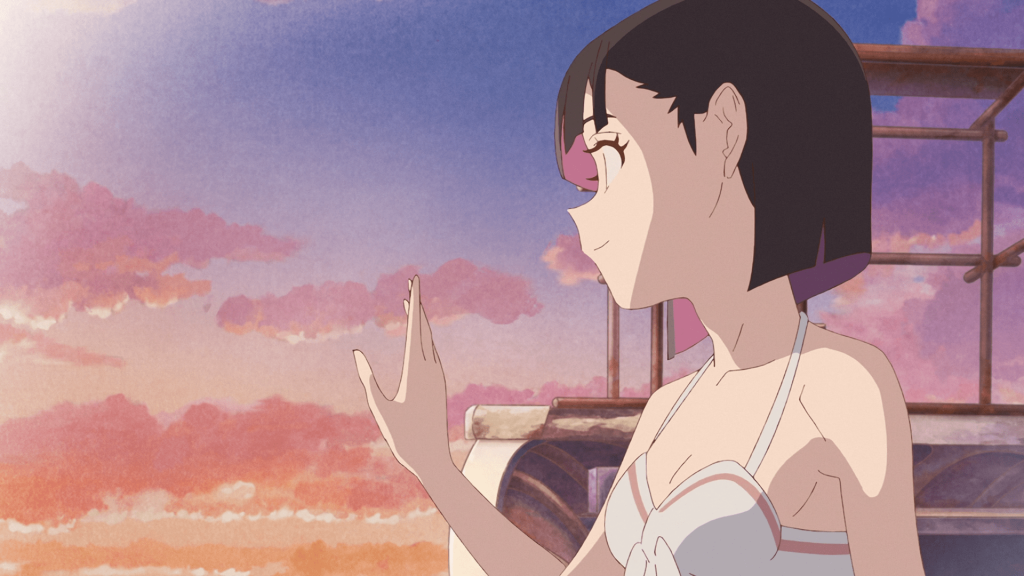
To gain a better understanding of how Purin’s vulnerability was depicted with such care, it’s worth turning toward the storyboard and episode director, Naoya Ando. As someone who has never worked at Pine Jam before, Ando’s guest appearance on the show doubles as a declaration of their commitment to young talent, as it was not that long ago that he was the topic of an “Anime’s Future” column on sakugablog [9]. Hailing from Studio Sunrise, he sharpened his teeth on the children’s shoujo series Aikatsu! As someone unfamiliar with the franchise, but keenly aware of the power children’s anime has when it comes to enabling creative spaces for ambitious directors to thrive, it comes as no surprise that with those limitations removed, Ando would reach a whole new level.
Perhaps the largest endorsement of Ando’s skill as an episode director is in his unabashed enabling of Yusuke “Fugo” Matsuo, despite having never worked together before. As previously mentioned, Fugo was the sole animation director for this episode, and recognizing the beach setting, he adjusted his approach such that the characters exist as a reflection of their environment. This would constitute looser, relaxed posture, simplified appendages, and all the while with a multitude of small imperfections and inconsistencies sprinkled throughout the drawings. There is much that can be said when it comes to the quest for perfection in art, and if there really is such a thing, but imperfection has just as meaningful a place at the table. It’s one which invites a great deal of interpretation on the part of the audience. For instance, if a perfect drawing is one which exactly matches the reference sheets, then there is little to say about it beyond what is already established on the surface. Conversely, when it resides in the realm of varying characteristic features, we can take something from the artists’ intent in designing it that way. These two Takumin drawings present a great example.
On the left, she is about to pick up a seashell. As the most mild-mannered character we would expect her to be abundantly cautious and delicate, which the disproportionally tiny fingers reflect. In contrast, the drawing on the right assumes large, clumsy hands which follows from the sheepish reveal that she, along with the rest of the D.I.Y. club independently decided to wear their swimsuits to the beach. Beyond this simple example, the demonstrative hands throughout the episode embody a language of their own, and it is easy to imagine how a more realistic approach within the same context would fall completely flat.
I would be remiss to not also at least mention the fourth and fifth episodes of the show, helmed by Yuki Yonemori and Eri Irei respectively and similarly filled with exuberant animation. Like Ando, both have just a few years of direction work under their belts, adding to the impressive roster of young talent present on the show. However, their participation on something like Do It Yourself!! stands for a purpose bigger than the show itself. As emergent talent is turned away again and again by the harsh realities spawned from an industry in complete disarray, creative platforms are crucial to instill the creative spirit in the hope that they’ll continue to express themselves through art regardless of whether or not they stick around as the industry collapses around them.
On that somber note, it’s worth repeating the degree to which Do It Yourself!! stands as a reminder of the creative power possessed by many individuals found throughout the anime industry. For as many slice of life/CGDCT anime there are, there is essentially nothing that exists on the same register. From the dry brand of humor, to Jobuko’s bid for near-bilingualism, it is in every sense of the word, original. While most original anime may be inherently more risky from an investment perspective, series like this demonstrate that there is more to our definition of success than just financial profit. As of writing, the show doesn’t seem to have been the largest hit – or even a hit of any kind, however as long as the artistic success endures, my unwavering support will undoubtedly follow.
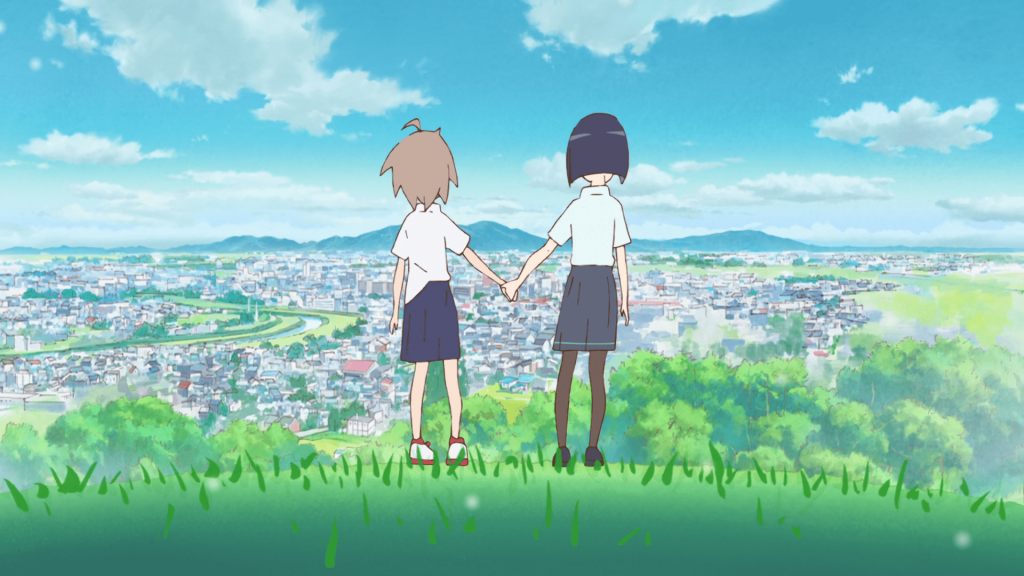
If you enjoyed this post, please consider supporting on ko-fi: here
References
1.
https://youtube.com/watch?v=7lFspLKUPJI&feature=shares
2.
Iso/Yamashita Roundtable from Bijutsu Techou Feb 2020
3.
https://kbnet.tumblr.com/post/699279157343977472/wait-is-mitsuo-iso-actually-involved-with-diy
4.
https://twitter.com/IsoMitsuo/status/800311557041242113
5.
https://wiki.evageeks.org/Statements_by_Evangelion_Staff_2
6.
https://dennocoil.fandom.com/wiki/Imago
7.
https://www.theguardian.com/technology/2022/nov/12/when-ai-can-make-art-what-does-it-mean-for-creativity-dall-e-midjourney
8.
https://twitter.com/ftLoic/status/1344266207302737921?s=20
9.
https://blog.sakugabooru.com/2018/03/22/animes-future-naoya-ando/
